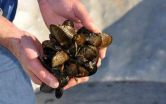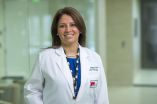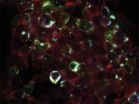(Press-News.org) AMHERST, Mass. - In a follow-up to her earlier studies of learning in infancy, developmental psychologist Lisa Scott and colleagues at the University of Massachusetts Amherst are reporting that talking to babies in their first year, in particular naming things in their world, can help them make connections between what they see and hear, and these learning benefits can be seen as much as five years later.
"Learning in infancy between the ages of six to nine months lays a foundation for learning later in childhood," Scott says. "Infants learn labels for people and things at a very early age. Labeling helps them recognize people and objects individually and helps them decide how detailed their understanding of the object or face needs to be."
Details of Scott's research, conducted with UMass Amherst psychological and brain science doctoral students Hillary Hadley and Charisse Pickron, appears in a recent online edition of the journal Developmental Science.
Scott's own earlier experiments as well as work by others shows that before they are six months old, babies can easily tell faces apart within familiar (e.g., human faces) and unfamiliar (e.g, monkey faces) groups. But by nine months, they are no longer as good at distinguishing faces outside their own species compared to faces from their own species.
This decline in recognizing unfamiliar individuals is called "perceptual narrowing" and is driven by the infants' experience interacting with some groups more than others and learning the names of individuals in some groups more than others during the six- to nine-month window, the neuroscience researchers say.
In the original experiment three years ago, Scott gave parents picture books to read to their infants in this age range. The books had photos of either different monkey faces or different kinds of strollers. For one group the parents spoke unique names, such as Boris or Fiona, and for the other group the same pictures were all labeled the same, just monkey or stroller.
Scott and colleagues measured how long the babies looked at the images, and their neural responses before and after training. Results for both looking and neural responses suggested that training with individual-level labels led the babies to learn in a way that would allow them to better tell the difference between examples of monkeys or strollers in the future.
However, one unanswered question was whether the learning seen during the six- to nine-month window would be retained into childhood. To answer this, Scott and her team conducted the follow-up study reported this month. They examined response time on a picture-matching task as well as brain responses in the children, now four and five years old, who participated in the earlier training study. The researchers also examined response in a control group of children who did not participate in the training study.
As Scott explains, she and colleagues predicted that children trained with individual-level, unique labels would show lasting behavioral and neural changes in response to early training experience during infancy. But it wasn't clear whether such changes would be specific to the trained images, that is, stimulus-specific, or related to a more general ability.
They found that children trained with individual-level labels showed both behavioral and neural advantages for human faces and not for the trained images.
"These children were faster to match human faces and they exhibited more adult-like neural responses to human faces compared to children who received experience with category labels and children with no book experience," they say.
This suggests that training within individual-level labels in infancy leads to long lasting learning effects that generalize from the trained images to the more commonly experienced category of human faces. "Even brief experiences can be important for infants, as they are actively building skills that they can use in a variety of contexts later in life," the authors note.
INFORMATION:
A National Science Foundation CAREER award to Scott supported this work.
More: http://onlinelibrary.wiley.com/doi/10.1111/desc.12259/abstract
WASHINGTON, DC--December 16, 2014--Using mathematical modeling, researchers at New York and Vanderbilt universities have shown that commensal bacteria that cause problems later in life most likely played a key role in stabilizing early human populations. The finding, published in mBio®, the online open-access journal of the American Society for Microbiology, offers an explanation as to why humans co-evolved with microbes that can cause or contribute to cancer, inflammation, and degenerative diseases of aging.
The work sprung from a fundamental question in biology ...
INDIANAPOLIS -- In the first real-world trial of the impact of patient-controlled access to electronic medical records, almost half of the patients who participated withheld clinically sensitive information in their medical record from some or all of their health care providers.
Should patients control who can see specific information in their electronic medical records? How much control should they have? Can doctors and other clinicians provide safe, high-quality care when a patient's preference may deny members of the medical team from seeing portions of the electronic ...
BALTIMORE, MD (Dec. 16, 2014)--With a unique, multi-faceted approach, researchers at the Lieber Institute for Brain Development (LIBD) have quantified the effect of previously unidentified anomalies in genetic expression that determine how the human brain develops from its earliest stages. Their work, published online December 15th in Nature Neuroscience, offers a novel technique for identifying biological markers in brain development that associate with risk for neurodevelopmental disorders such as schizophrenia and autism spectrum disorder (ASD).
Using state-of-the-art ...
The mortality of larval Pacific oysters in Northwest hatcheries has been linked to ocean acidification. Yet the rate of increase in carbon dioxide in the atmosphere and the decrease of pH in near-shore waters have been questioned as being severe enough to cause the die-offs.
Now, a new study of Pacific oyster and Mediterranean mussel larvae found that the earliest larval stages are sensitive to saturation state, rather than carbon dioxide (CO2) or pH (acidity) per se.
Saturation state is a measure of how corrosive seawater is to the calcium carbonate shells made by ...
Being "average" is often considered a bad thing, but new research suggests that averageness wins when people assess the trustworthiness of a face. The research indicates that, while typical-looking faces aren't seen as the most attractive, they are considered to be the most trustworthy. The new findings are published in Psychological Science, a journal of the Association for Psychological Science.
"Face typicality likely indicates familiarity and cultural affiliation - as such, these findings have important implications for understanding social perception, including cross-cultural ...
ITHACA, N.Y. - Since 1998, hundreds and sometimes thousands of dead eider ducks have been washing up every year on Cape Cod's beaches in late summer or early fall, but the reasons behind these cyclic die-offs have remained a mystery.
A team of scientists from Cornell, Tufts University, University of Georgia, the U.S. Geological Survey and the U.S. Fish and Wildlife Service have pinned down one of the agents responsible: a pathogen they're calling Wellfleet Bay virus (WFBV). Their findings shed light on why eider ducks (also called common eiders) die on Cape Cod every ...
NEW YORK, NY -- Researchers at NYU Langone Medical Center have developed new technology that can assess the location and impact of a brain injury merely by tracking the eye movements of patients as they watch music videos for less than four minutes, according to a study published Friday on-line in the Journal of Neurosurgery.
The study suggests that the use of eye tracking technology may be a potential biological marker for assessing brain function and monitoring recovery for patients with brain injuries.
Led by Uzma Samadani, MD, PhD, chief of neurosurgery at New ...
GALVESTON, Texas -- In the largest study to date evaluating outcomes of Hispanic women with endometrial uterine cancer, researchers at the University of Texas Medical Branch at Galveston have found that Hispanic women in the United States were significantly less likely to survive the cancer than non-Hispanic white women.
A total of 69,764 women diagnosed with endometrial cancer between 2000 and 2010 were included in this study of public-use data from the National Cancer Institute's Surveillance, Epidemiology, and End Results Program. The study is available online in the ...
A team of researchers from the University of California, San Diego have demonstrated a way to emit and control quantum light generated using a chip made from silicon--one of the most widely used materials for modern electronics.
The UC San Diego researchers recently described their new device's performance online in the journal Nature Communications, available via Open Access .
The researchers say practical applications of quantum optics will seem more feasible if devices for generating and controlling these photons can be manufactured using conventional materials ...
It's the most basic of ways to find out what something does, whether it's an unmarked circuit breaker or an unidentified gene -- flip its switch and see what happens. New remote-control technology may offer biologists a powerful way to do this with cells and genes.
A team at Rockefeller University and Rensselaer Polytechnic Institute is developing a system that would make it possible to remotely control biological targets in living animals -- rapidly, without wires, implants or drugs.
Today (December 15) in the journal Nature Medicine, the team describes successfully ...






